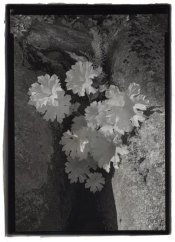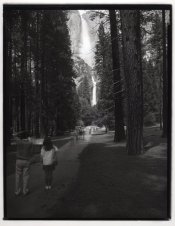Jan,
It has an E39 base -- which I believe is the Mogul base...much larger than the standard light bulb base. One should be able to pick up a fixure for it at a good hardware store...or worse comes to worse, at a electrical supply company.
I haven't got one of those self-ballested merc lamps yet, so I don't have any exposure experience with it -- and with homemade carbon tissue, and one's individual negatives, exposure times are all over the map.
I have been using two 175W merc vapor lamps -- 350W total, within 10" of the printing frame. My times are in the range of 30 minutes to an hour. My negs tend to be a bit heafty and with high contrast (very solid highlights). I also use a bit more sensitizer than Sandy, so I am fighting thru more of the yellow of the dichromate also. My record exposure for a single 175W lamp was 6 hours -- made a most beautiful print (I could not see into the highlights of the negative on a light table, yet had almost clear areas in the deepest blacks!) I unfortunately ruined the negative trying to make a second print with a 10 hour exposure. I wasn't using a fan back then and I think I baked the tissue against the negative.
I now use a table fan that blows air across the surface of the printing frame and that seems to be enough to keep things cool.
Sandy, On the print you sent me, I noticed you used a bank of BL bulbs for the exposure. Relative to the print I sent you and the sharpness I can usually get, I would not call it a sharp print, but I do not know if the is due to the exposure method or the negative (it appears to be from an inkjet neg). Have you been able to achieve the sharpness of a camera negative with an inkjet negative?
I ask because "sharpness" is a subjective term and I am not sure of your definition of sharpness relative to mine.
Vaughn





 don't laugh. £20 off of the auction place. It has a built in timer and variable output. Done a Van Dyke in 3 minutes, the salt in my gallery in 3 and a half at a distance of 12 inches. Might not be what you were after, but its another option. ( can also get a nice tan if you're inclined that way
don't laugh. £20 off of the auction place. It has a built in timer and variable output. Done a Van Dyke in 3 minutes, the salt in my gallery in 3 and a half at a distance of 12 inches. Might not be what you were after, but its another option. ( can also get a nice tan if you're inclined that way  )
)

